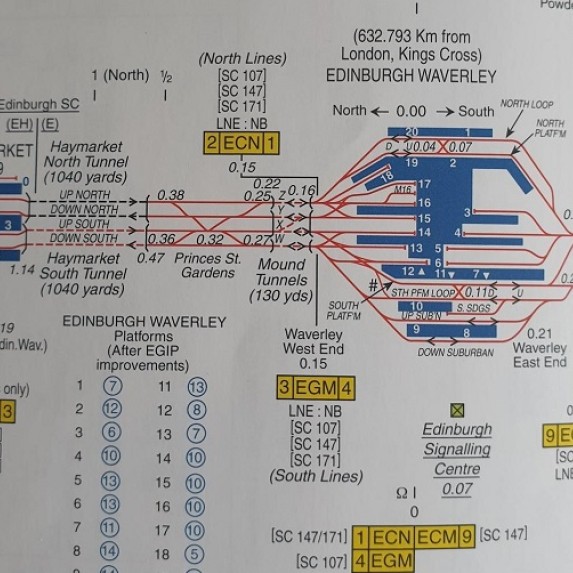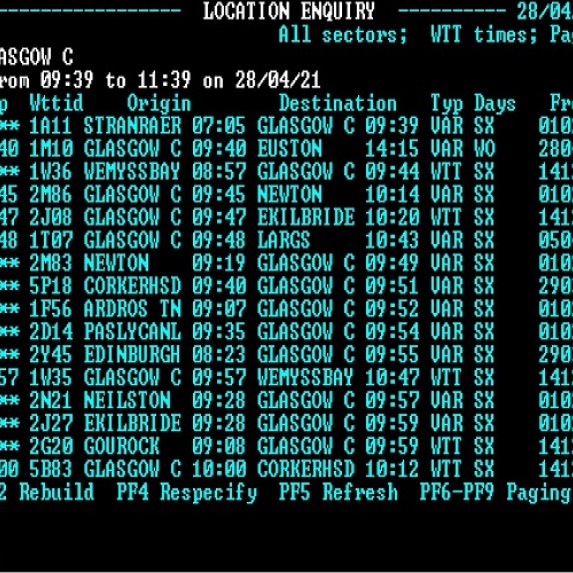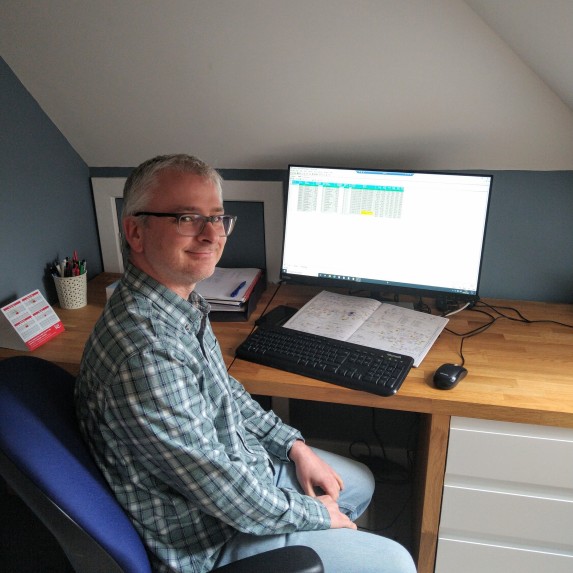There are a lot of fascinating roles within the railway, which is why we're planning to give you an insight into 'a day in the life' of each team.
Each month, we’re going to chat to different people across the business to have a nosey into what they do. First up, we chatted to David Heeney, the Senior Operational Planning Manager in the Train Planning team.
This last year has thrown up a lot of challenges for David and his team. Everything went out the window overnight as the pandemic changed all our lives. Adapting to keep Scotland’s keyworkers moving safely became the major focus for the whole of the railway, and the Train Planning team were right at the heart of this, having to come up with new timetables frequently and at very short notice.
So what does the Train Planning team do?
We try to produce timetables to suit demand, making best use of our trains and staff to help achieve this. That could be tailoring services for commuters, offering travel opportunities for shift workers and people socialising in the evening, or providing as many carriages as we can to get people to and from large events. We also need to make alterations to the timetable for engineering work, which takes place somewhere on our network most weekends.
How much work goes into creating and amending timetables?
Much more activity goes into creating or amending a timetable than people might imagine. We have to carefully manage the timing of trains because they can’t be driven on sight like a car or a bus can, so need to be spaced apart through meticulous planning.
To help achieve this, we work closely with Network Rail (who manage the track, signals and lots of other infrastructure) to ensure that the timetable we want to run doesn’t conflict with other train operators, or other ScotRail trains that need to share the same bit of track. Whatever we plan to do, we also need to ensure that we have enough trains and people to be able to deliver the service. We need to make sure we give all our trains frequent TLC so that they can be serviced and cleaned, ready for the next day and that our staff get regular breaks and time away from work too.

What do you have to do to implement the plans?
Our plans get handed over to the Control team a couple of days in advance for them to manage in real time. We don’t always get things right, but we always try to act on feedback from customers and staff to improve any parts of the ever-evolving plan, within the resources we have available.
So what does a typical working day look like for you?
An average day will kick off with a departmental management team meeting to discuss the latest goings on and how it affects what we do. We work in a fast-moving environment where things can change quickly, so a daily update is essential. Afterwards, I will have a catch-up session with my own team, who are responsible for making changes to our daily plan. We will dig a little more into the detail to work out how we manage the issues and workload items pertinent to short term change. Once we have discussed what the priorities are for the day, I usually grab a coffee and catch up with any important and/or urgent incoming emails and phone calls before the next meeting.
And each day is definitely different …
One day I can be planning what the timetable will look like more than a year from now. The next, I can be trying to put together plans for the weekend because a late-notice event has popped up, such as Scottish travel restrictions easing a week earlier than anticipated. That kind of variety is what makes me still enjoy my job so much.
What were the biggest challenges you had to face in the last year?
The year really has been relentless – not only with travel restrictions – but with the unprecedented number of weather-related infrastructure problems for which we also had to write temporary plans. In particular, for the railway community as a whole, having to react under such tragic circumstances last August when three people sadly lost their lives on the railway near Stonehaven is something I hope is never repeated.
How did it compare to a normal year?
Normally we work around nine months in advance for permanent timetables, four months in advance for planned engineering work and deal with events such as football matches and concerts maybe one or two months in advance. From April 2020, we dealt with full timetable changes at frequent intervals with just a few weeks’ notice. We normally change the timetable twice a year with months of planning going into each one but in the last year we processed more than a dozen with very little time to plan them!

What made you want to join the Train Planning team?
I got a glimpse of what the team did when I was in my previous job as a roster clerk. I used to check the content of shifts that were produced by the team to ensure that a member of staff with the correct competence was allocated to each job. I was fascinated by how it was all put together so I started bugging people who worked in the department and finally got a job after much perseverance and one or two failed interviews that I’d rather forget!
If someone reading this fancied joining the team in the future, what advice would you give them?
Be patient and go for it! It takes a long, long time to master the art of train planning. I’ve been here fifteen years and every day is still a school day. We deal with so much information that you would have to be an exceptional person to remember everything you have ever learned. The work will suit you down to the ground if you like problem solving, have an eye for detail and aren’t put off by gaining a frighteningly comprehensive knowledge of trains, all in the line of duty of course!


